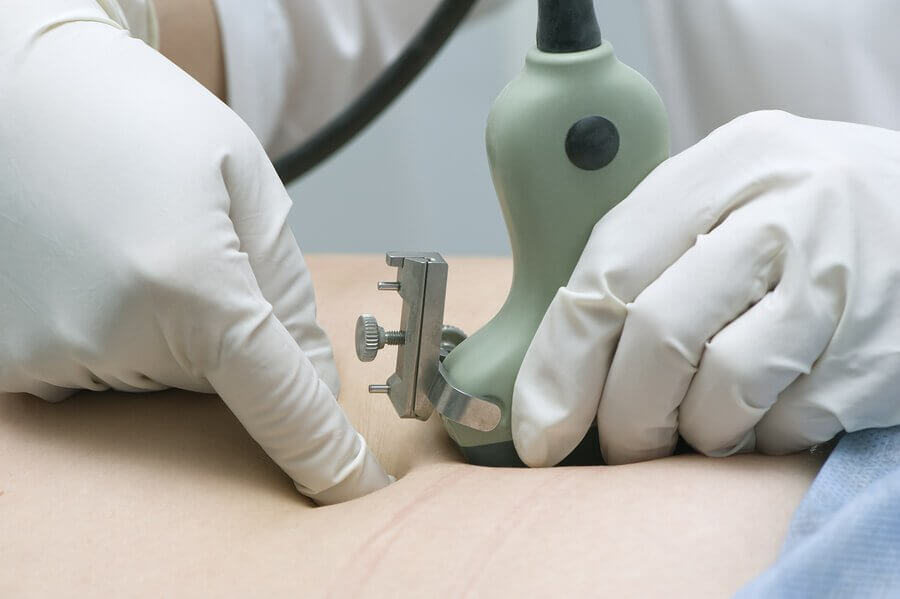What Are the Complications of Oligohydramnios?


Written and verified by the doctor María Belén Del Río
Have you ever heard about the complications of oligohydramnios? Specialists use this term to refer to low levels of amniotic fluid.
This fluid is essential for babies to live in the womb. It’s the protective layer around their body. Additionally, it helps their muscles, respiratory organs, and digestive system develop properly.
It starts to grow 12 days after conception. In fact, its composition changes as babies develop.
“Amniotic fluid is a liquid that surrounds and cushions the embryo and developing fetus inside the amniotic sac. It allows the fetus to move inside the uterus without it adjusting too much to his body. Additionally, it provides hydraulic support.”
– José Luis García and Claudia García –
Over time, babies start to move with the help of the amniotic fluid. That’s why it’s important to keep it at healthy levels.
If the amount of fluid is too high or too low, babies can have issues with growth and development. If it’s too low, it’s called oligohydramnios. On the other hand, if it’s too high, it’s called polyhydramnios.
What is oligohydramnios and how do you know you have it?
As we mentioned earlier, it’s when you don’t have enough amniotic fluid around your baby. It’s measured through different methods, one of which is an ultrasound. You can do it in different stages of pregnancy, and you might need a few of them to control and treat this condition.
What causes low amounts of amniotic fluid?
- Maternal disorders, such as preeclampsia, separation of the placenta, and high blood pressure.
- Side effects from other medications that pregnant women take. In fact, some of them might be NSAIDs.

- Prolonged or post-term pregnancy. In other words, this is pregnancy beyond 40 weeks.
- The fetus has any type of condition that involves poor development of urinary functions.
- Problems with growth and development of the fetus inside the womb. This condition is known as intrauterine growth restriction (IUGR).
- Alterations in chromosome formation.
What are the signs of complications of oligohydramnios?
Generally, this condition doesn’t have any particular symptoms that are easy to detect. However, mothers might think they have complications of oligohydramnios if they feel like their baby is moving less all of a sudden.
Another sign of complications of oligohydramnios is poor uterine growth compared to normal.
What are the consequences of complications of oligohydramnios?
If you detect complications of oligohydramnios during the first half of pregnancy, the most serious risks are:
- Birth defects. Oligohydramnios can have consequences at birth like compression of the baby’s organs and prenatal injuries.
- Increased chance of miscarriage or fetal death.
If you diagnose it in the second half of pregnancy, some negative consequences may be:
- Reduced growth inside the uterus. Therefore, there will be deficiencies in the baby’s organ development.
- Increased chances of having a premature birth.
- Complications during delivery. For example, you could have compression of the umbilical cord, meconium. Additionally, you may need to have a cesarean section.
Treatment for oligohydramnios
- Amnioinfusion during childbirth. To do this, a specialist will insert a serum to the intrauterine cavities through a catheter. With this technique, they can help bring the amniotic fluid levels back up. Additionally, they decompress the umbilical cord. Therefore, this will reduce your chances of needing a cesarean section.
- Fluid injections or amniocentesis. This is similar to the previous procedure, but you do it before delivery. It’s important to clarify that the liquid that the doctor injects only lasts for about a week. It’s a temporary measure that helps doctors check and make sure the baby is developing normally.

- Rehydrate the mother. Getting IV fluids or drinking more water also helps increase the amount of amniotic fluid in the womb.
It’s important to know what levels of amniotic fluid are normal for your baby to grow and develop fully. Remember, this liquid is your baby’s home for many weeks and needs to be as good as possible.
If you think you have oligohydramnios, you should talk to your doctor to see what tests you need to diagnose it.
This text is provided for informational purposes only and does not replace consultation with a professional. If in doubt, consult your specialist.
